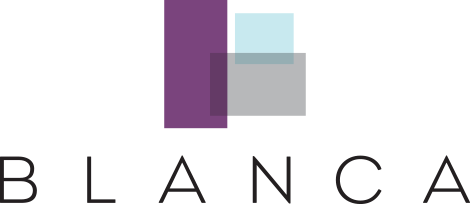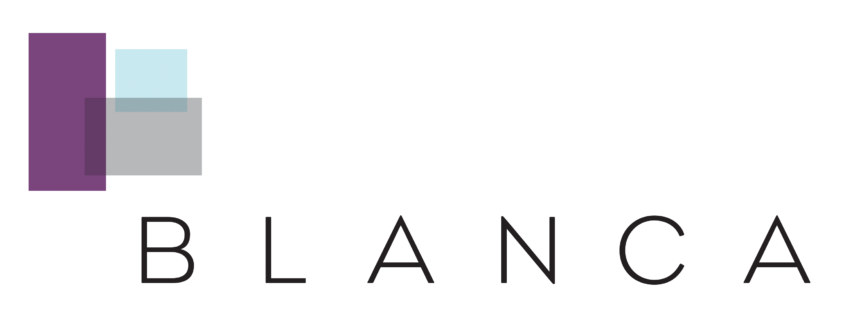How schools, trains and concerts are building up Miami’s neighborhoods
On Thursday, school’s out for summer at the Downtown Doral Charter Elementary, and its report card is packed with A’s. In only its second year of operation, the school is already topping county-wide honor rolls — and helping to fuel Doral’s thriving real estate market.
In the post-recession building boom, developers promoted sweeping waterfront views and luxury bonuses like car elevators, bowling alleys, plunge pools and private chefs to wealthy buyers. But in recent months, while sales in the luxury condo market have stalled amid a slowdown in Latin America, developers are starting to reap the benefits from master plans that incorporate long-term, community-building amenities.
The Downtown Doral Charter Elementary School is one gamble that has paid off. The Florida Department of Education ranked the school tops among Miami-Dade elementaries for total achievement in English and math in 2015- 2016. In November, principal Jeanette Acevedo-Isenberg won the Council for Educational Change’s annual Leonard Miller Principal Leadership Award —the first time a charter school won the honor.
The school is also proving to be a formidable draw for homebuyers. While any child who lives in Miami can apply to attend, residents of the new Downtown Doral development are given preference. According to a report by Gridics.com, Doral had 167 sale closings in the first quarter of 2017 — the fifth-highest of any neighborhood in Miami-Dade County.
Codina Partners CEO Ana Codina Barlick, who has overseen the metamorphosis of Downtown Doral from drab offices into a thriving work/live/play community, said an elementary school offering top-notch education was always a critical part of the master plan. A high school is scheduled to break ground in 2018.
“Our business is real estate, not education,” Codina said. “We don’t make a penny off the school. We just wanted it to be great, because the better it is, the more people would want to live in this community.”
In addition to that massive, 120-acre development, which cost more than $1 billion, Codina Partners also gave Doral a new city hall and the three-acre Downtown Doral park. But the elementary school takes developer-led community facilities to a new level.
“GENTRIFICATION IS THE GENESIS OF PEOPLE TRYING TO MAKE MONEY. NO ONE THINKS DEVELOPERS ARE DOING THESE THINGS OUT OF THE GOODNESS OF THEIR HEARTS.”
Doug Jones, managing partner of JAG Insurance Group
The Downtown Doral Charter Elementary School is the first charter school built in a public-private partnership between the Miami-Dade School Board and a developer. Codina Partners donated the $3.5 million plot of land where the school sits. The school is a 501 (c)(3) nonprofit corporation with its own board. That board leased the land back from the county school board and issued $20 million in bonds to construct the building.
The nonprofit board pays the Miami-Dade School Board a fee to manage the Doral operation. But the nonprofit board hires the principal and sets the direction of the school. Reflecting Doral’s high percentage of Hispanic residents, 60 percent of all classes are taught in English; the other 40 percent are in either Spanish or Portuguese. Teachers at the school work under one- year contracts.
“It wasn’t just about providing a school,” Codina said. “That’s really easy. You can call a charter school company and they will put a school here and you don’t have to think about it. We wanted to go beyond that.”
The investment is working. An analysis of U.S. census data by Florida International University’s Metropolitan Center reveals Doral is the fastest-growing big city in Florida and the 11th fastest in the U.S., with 58,000 residents in 2016 — a 26.1 percent increase since 2016. The median price of homes currently listed in Doral is $398,000; the median rent is $2,300. The median income of Doral households was $72,933 in 2015 — almost 60 percent higher than the Miami-Dade County median of $43,129.
“One of the big things that drives property values up is having good education nearby,” Codina said. “We wanted to sell something more than walls, a roof, a floor and some nice appliances. We offer a much bigger value to people by telling them if you move here, you have a school for your kids through high school.”
Quality-of- life perks
Doral isn’t alone in focusing on education: The Related Urban Development Group is currently negotiating with the Miami-Dade School Board to include a secondary school at its Gallery at West Brickell affordable and workforce housing project at 201 SW 10th St. Other developers are pinpointing facilities most important to their own potential buyers, including transit stations, places of worship, cultural events and infrastructure designed to serve full- time Miami residents and improve their quality of life.
“Real estate has started to transition away from just brick-and- mortar investment and more into creating a sense of place and being part of the fabric of their community,” said Steven Hurwitz, a partner at the Florida real estate firm CREC.
“It’s not a purely altruistic move, but developers who have done it successfully are seeing it equates to a more successful investment overall,” Hurwitz said. “Miami neighborhoods are starting to develop individual identities. The projects being presented in them are often playing a role in servicing that demographic and delivering more of an experience.”
Some of those projects are relatively small in scale and cater to a niche demographic. But their impact on their respective communities can be significant.
As part of its 17-floor, 61-unit luxury condo project Aurora, at 17550 Collins Ave., developer Verzasca Group is donating a 2,000 square-foot mikvah — a bath used by Jewish men and women for ritual immersion — to the Chabad
Lubavitch of Sunny Isles Beach. The mikvah, to be delivered upon completion of the building, will have a separate entrance and will be available for use by anyone in the community, not just residents of the tower.
“As a fairly new developer in town, we started to do community outreach and meet with the neighbors to understand who lives in the area,” said Verzasca managing director Tim Lobanov. “We knew we would need to get approval from the city commissioners for this project. We met with Rabbi Yisrael Baron of the community center across the street and he told us about the need. Among the Jewish people in the area, we are already known as the building that’s going to have a mikvah in it.”
On Miami’s Upper East Side, Global City Development and the Midtown Group are teaming up on a mixed-use development named Legions West that would initially bring 237 rental apartments and a new 15,000 square-foot American Legion facility overlooking Biscayne Bay at 6445 NE Seventh Ave. in Miami.
“We’re trying to update what the American Legion has been in the past — a place for older veterans to come have a drink and talk — and attract younger veterans from Afghanistan and Iraq who have young families and want to participate in activities that are more relevant for them,” said Brian Pearl, principal and co-founder of Global City Development. “We’ve organized our whole business around socially impactful real estate development. There’s a benefit to having more integrated communities that will pay off in the long run.”
Pearl said that even though his company won’t make any money from the American Legion facility, doing something positive for the community helps people feel more comfortable with new development.
Global’s desire to incorporate a swath of Legion Memorial Park into its eventual 1.2 million square-foot complex has already met with resistance. That kind of controversy is bound to arise when locals don’t entirely agree with the developer’s vision.
“Businessmen will always be businessmen,” said Doug Jones, managing partner of JAG Insurance Group. “Gentrification is the genesis of people trying to make money. No one thinks developers are doing these things out of the goodness of their hearts. But at the end of the day, you can’t stop a lot of this from happening, so it becomes about what you can get out of it. A lot of developers end up making positive changes in communities by doing what they have to do in order to get their deals done.”
Changing the city
Other developers are taking a big-picture approach with amenities needed to help Miami fulfill its destiny as a major metropolis — with all the accompanying infrastructure that implies. In traffic-challenged Miami-Dade, nearly a dozen mixed-use residential projects are planned along U.S. 1 and in Hialeah, close to Metrorail. The trend was spurred by Brickell City Centre, Swire Properties’ mammoth 5.4 million square-foot mixed-use complex that opened in 2016.
When Swire announced its ambitious plan in 2011, Miami was still in the grip of the Great Recession. Brickell was a ghost town of unlit condos. Metrorail and Metromover’s grungy stations reflected county funding shortages. The idea of an upscale city-within- a-city that would lure shoppers, diners, residents and office workers arriving by public transit seemed like a pipe dream.
But long before the designer shops, condos, offices and eateries opened, developer Swire Properties spent $10 million refurbishing the Eighth Street Metromover Station, with a design by Arquitectonica, that would fit functionally and aesthetically into the project’s finished structure. As part of the station’s redesign, Swire is under contract to maintain the facility until 2025, with an option to renew the agreement every 10 years after that, up to 99 years.
“All our mixed-use developments in Hong Kong and China sit on top of major transport nodes,” said Kieran Bowers, president of Swire Properties. “In Miami, there’s only the Metrorail and Metromover to choose from. But we’ll always integrate public transport into the project.”
Swire and Arquitectonica paid special heed to the station’s design and its role in the overall plan. “It would have been easy for us to have made changes but left a municipal style of architecture design. But we wanted you to feel a difference when you arrive at Brickell Centre,” Bowers said. Florida East Coast Industries (FECI) is putting the transit concept on steroids.The $3 billion, 235-mile Brightline inter-city express train service will be the first to connect South Florida in early fall via a rail system. Passengers will be able to travel from Miami to Fort Lauderdale in less that 30 minutes at a speed of up to 79 miles per hour. The train will reach up to 125 miles per hour on the eventual extension connecting West Palm Beach to Orlando.
All aboard
The project, a privately owned venture by FECI subsidiary Brightline, is expected to alleviate South Florida traffic woes, removing an estimated three million cars from clogged highways such as I-95 and U.S. 1. One key element: a vertical neighborhood created around the rail’s Miami hub.
In downtown, FECI is developing the 11-acre MiamiCentral on Northwest First Avenue between Northwest Third and Eighth streets. The station will connect to Metrorail, Metromover and the Tri-rail and feature three buildings offering 800 rental apartments, nearly 200,000 square feet of retail space, and 300,000 square feet of Class-A office space.
Tere Blanca, founder and CEO of Blanca Real Estate, which is handling commercial leasing, says MiamiCentral will offer grocery stores, food and beverage options at all price ranges, a fitness center, an elevated jogging track, and loads of shopping. Service between Fort Lauderdale and West Palm Beach is to begin in July, with Miami service launching this fall.
“The Brightline group is moving their offices there this summer,” Blanca said. “Several leases are already underway, and the office building is delivering at the end of June and should be leased out before the end of the year. It’s an exciting project that is driving tremendous investment around it.”
$74 million Amount being spent on improving city infrastructure at Miami Worldcenter in downtown Miami
One of the biggest neighboring investments: The massive Miami Worldcenter, the 27-acre mixed-use project spanning 10 city blocks adjacent to the MiamiCentral station. The second-largest in development in the U.S. after Manhattan’s Hudson Yards, Miami Worldcenter spans 10 city blocks and will offer a combination of retail, residential, hotel, office and expo spaces. The first phase of the project is due in 2019.
As part of the $2 billion Miami Worldcenter project, developers issued $74 million worth of private bonds to fund installation and improvement of sewage and water lines, drainage, cable and Internet fibers and new sidewalks in the formerly blighted area.
“People look at Miami Worldcenter as a project, but it’s really not: It’s a truly mixed-use city-within- a-city,” said Nitin Motwani, managing principal of Miami Worldcenter Associates, a joint venture between the Falcone Group and Centurion Partners. “We’re hoping this will have the kind of impact on downtown Miami that Rockefeller Center had on Manhattan: change the way that area operates. All the infrastructure work that the public will enjoy is not the sexy stuff that everyone likes to talk about. But it’s the stuff that makes possible all the buildings you see on Brickell.”
Building community
Other developers are investing in less tangible, but still crucial, amenities. Nir Shoshani, who runs NR Investments with his partner Ron Gottesmann, has been spearheading the cultural scene over the past three years in the self- branded Arts + Entertainment district near the Omni in downtown Miami.
The developers have drawn a young demographic to the formerly desolate neighborhood via pumped-up programming: free rooftop concerts featuring folk and acoustic acts from around the U.S.; outdoor movie screenings hosted by the Miami Film Festival, street markets and art shows.
Shoshani estimates he has invested more than $1.5 million on all the area’s events thus far, and his gamble may be about to pay off. The 37-story Canvas Condo tower, at 1630 NE First Ave., is scheduled to be completed in early 2018, with its bohemian-styled units ranging in size from 620-1,110 square feet and selling for $300,000-$580,000.
“Risk is always a factor in business, especially in real estate,” Shoshani said. “Our idea was to really push forward with an urban village concept. If people had thought what we’ve been doing was a promotional stunt by a developer, it would have never gotten off the ground. This wasn’t a renaissance: It’s not like there was something going on in this neighborhood 50 years ago.”
Other developments feature amenities that dig even deeper into their communities, providing job opportunities, healthcare, museums and youth centers.
A $307 million redevelopment of Liberty Square, Miami-Dade County’s biggest and oldest housing project, broke ground in May. When completed by 2020, developer Related Urban Development will deliver 1,400 condos, townhouse and apartments — all integrated with free wifi — as well as a youth center provided by the Mourning Family Foundation, a YMCA-run family center and daycare, a museum celebrating the area’s history, a medical center and 65,000 square feet of retail anchored by a national grocery chain and supplanted by locally owned businesses.
To the north, slow but steady progress continues on SoLe Mia, a 183-acre development at 15045 Biscayne Blvd. in North Miami. The project — a joint venture between Richard LeFrak and Turnberry Associates co-chairs Jeffrey Soffer and Jackie Soffer — will occupy the largest piece of underutilized land east of Biscayne Boulevard in the county. SoLe Mia will be comprised of 4,390 residences, 1.4 million square feet of retail space, dining and entertainment and two swimmable 10-acre lagoons.
According to the developer, 29 percent of the 14,000 short- and long-term jobs created by the project have been filled by North Miami residents — nearly three times the 10 percent mandated by the county.
Old-school amenities still popular
The growth of practical, neighborhood-building amenities doesn’t mean traditional standbys such as clubhouses and swimming pools are going away. Carlos Gonzalez, division president of Lennar Homes, Florida’s largest housing developer, said variations on tried-and- true amenities are still an effective way to sell new houses.
“The No. 1 competitor for all new home developers is the resale market,” he said. “There are more resale transactions than new home transactions. So how do you set yourself apart other than having new product built to the latest codes? We do home automation and energy saving. But that isn’t enough. You have to provide things such as attractive clubhouses with a kids’ water park, or a gym for grown-ups with an adjacent playroom for your kids while you work out. In South Florida, we’re tailored toward outdoor living, so we have exterior kitchens and fire pits.”
But as Miami’s population density increases and familiar neighborhoods develop more nooks and crannies, developers will continue to gamble on long-term community-building endeavors — a sign of faith in the city’s continued growth.
“When we first started this, people thought we were crazy,” Miami Worldcenter’s Motwani said. “During the recession, they thought we were stupid. Today they say we’re lucky. We are, because a lot of what we counted on has come to fruition. But this kind of transformative project just takes a little longer. It’s a great opportunity to do something long-lasting and more meaningful than just coming in, putting up another building and leaving.”




